by Dr Claudia Wosnitza Mendo
Evidence of human presence has been found in different sites along the Peruvian coastline dating back 15,000 years. Of the pre-ceramic era, archaeologists retrieved only the remains of nets, pumpkins that were used as floats and perforated stones used as weights.
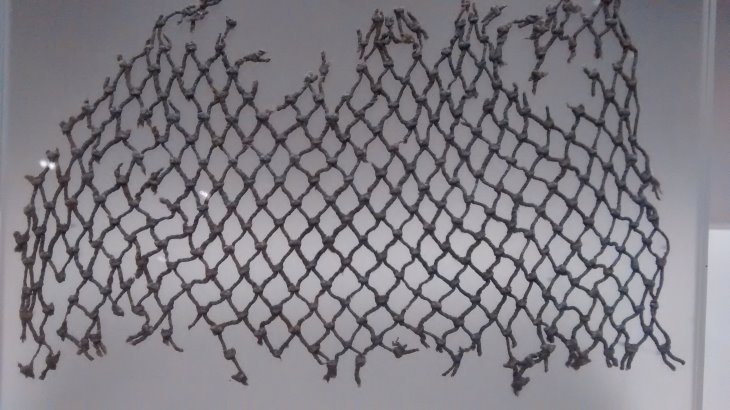
Figure 1: Remains of a fishing net found in the Huaca Prieta (photo taken at the Larco Herrera Museum, Lima, Peru)
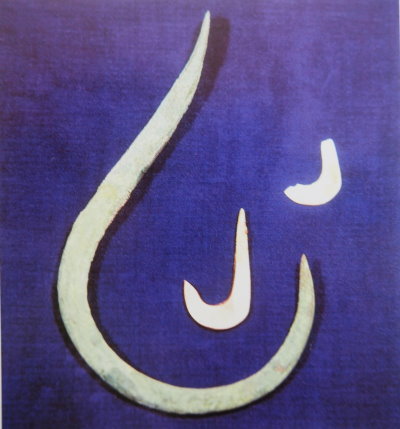
In the north of Peru, in the El Brujo cove, there is an archaeological site, the Huaca Prieta, where a first occupation phase was confirmed and dated to the period between 15,000 and 8,000 years before the present (BP).
But fragments of nets, made of cactus thread with floats of mates or pumpkins and stone weights with a central perforation were found only at a later stage (6,000 to 4,500 BP).
They also found hooks made of shell, choro and mussels (Fig. 1 and 2).
The food of the inhabitants was based on a mixed diet from agriculture and fishing: fava beans, beans, squash, pumpkins and abundant marine resources such as fish, mussels, clams, crabs, sea urchins and starfish, seaweed and sea lions.
From the era when the technique of ceramics had already been developed (from 3500 BP), archaeologists have found a large number of ceramic vessels (huacos) with representations of fish and other marine resources.
The Mochica culture stands out with a considerable number and characteristic ceramics of marine representations, (Fig. 3). See also the catalog of the Larco Herrera Museum in Lima, Peru.
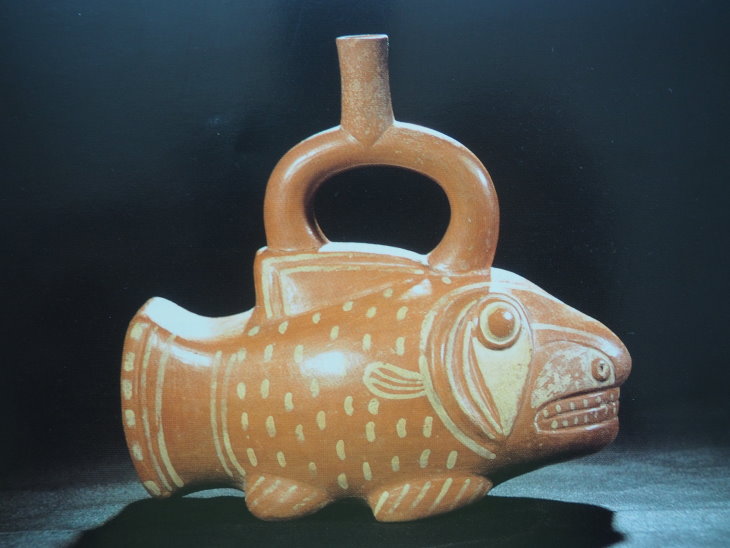
Figure 3: Representation of a fish in typical Mochica Culture style
The importance of the sea and its wealth for the ancient Peruvians is also represented repetitively in metallurgical, textile and decorative art, for example in this ceremonial shirt, a symbol of power, with guilded copper fish (Fig. 4).
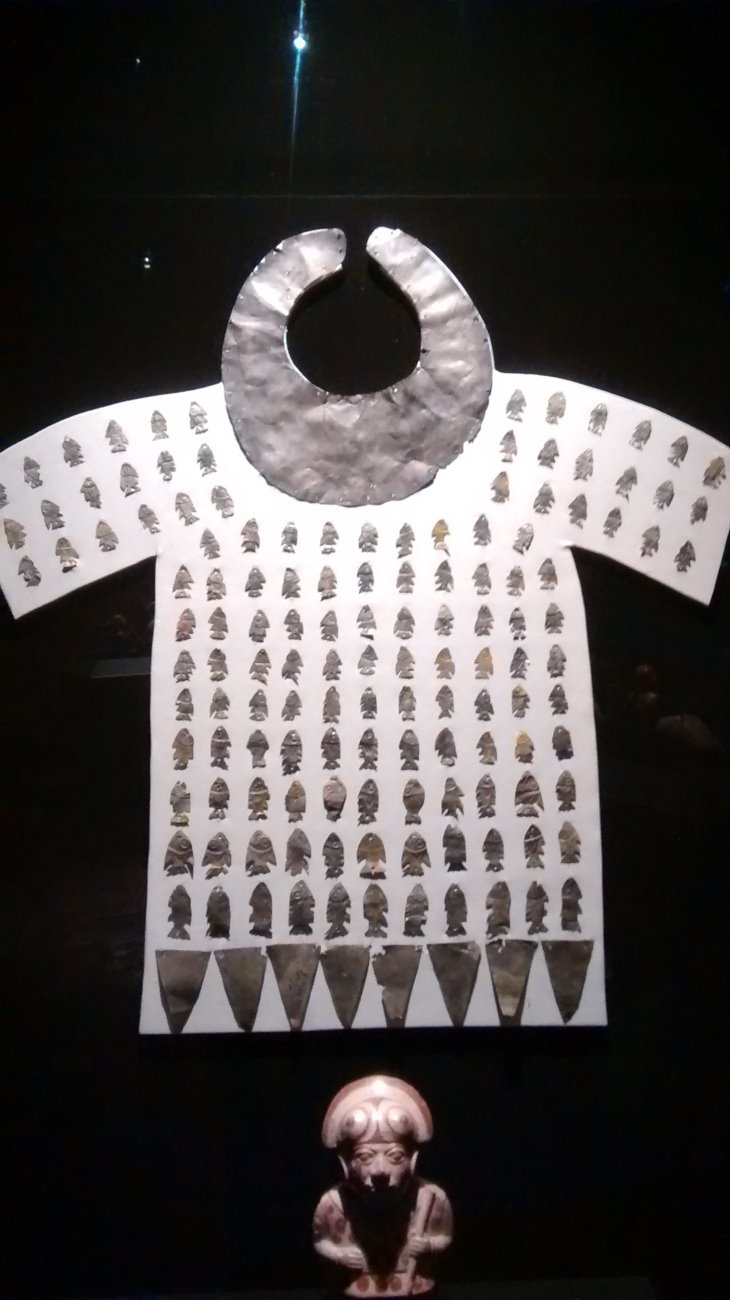
Figure 4: Ceremonial shirt (Photo taken in the Larco Herrera Museum in Lima)
Fishing crafts
The most used watercraft for fishing was the "Caballito de totora" the red little horses of reed. Figure 5 shows two fishermen who paddle along with their cane oars to go out fishing. Fig. 6 shows the same type of reed watercraft being used today as they are lined up to dry on the beach. They are still used for fishing. Nets and fish collected are stowed away in the cavity (see photo further below).

Figure 5: Mochica fishers with their reed watercraft called “caballito de totora”
Father Acosta affirms in his writings on the Natural and Moral History of the Indians ("Historia Natural y Moral de los Indios"), that "the Indians of the Ica Valley used to go fishing in some skins, or blown up sea lion skins, and from time to time they blew them further like balloons so that they would not sink".
The importance of fisheries for the development of the different cultures
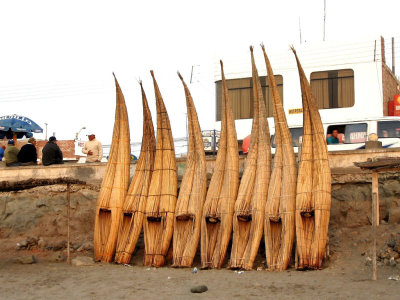 The Spanish chronicler Piedro de Cieza de León, in La Crónica del Perú (1553) describes how the natives of the Chilca region sowed the corn seeds with the heads of anchovy or sardines as fertilizer taking advantage of the enormous abundance of these fish.
The Spanish chronicler Piedro de Cieza de León, in La Crónica del Perú (1553) describes how the natives of the Chilca region sowed the corn seeds with the heads of anchovy or sardines as fertilizer taking advantage of the enormous abundance of these fish.
From the fishing villages by the sea, fish and molluscs were exchanged for agricultural products such as cotton, used to weave the nets. Thus, close reciprocal relations have been found between the ancient city of Caral (23 km from the coast) and the fishing village of Aspero on the shores of the Pacific Ocean. Fish was also dried or cured to take the product to more distant places in the mountains where it was exchanged for dried meat of camelids like the guanaco and llamas.
Thanks to all the research done and the archeological findings in the different places along the Peruvian coast, it can be concluded that the ancient settlers achieved mastery of the sea and its products with an intensity and complexity similar to that achieved in agriculture. Ancestral fishers achieved control of the coastal sea as effectively as did the indigenous people of the Andes on the land.
References
Acosta, Joseph. Historia Natural y Moral de las Indias (1590). Biblioteca de autores españoles, Madrid, 1954.
Cieza de León, Piedro de. La Crónica del Perú. Fondo Editorial de la Pontificia Universidad Católica del Perú, Lima. 1986-1987.
Libro de oro de la pesquería peruana. Sociedad Nacional de Pesquería; 50 Aniversario, 402 pp.








